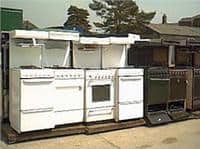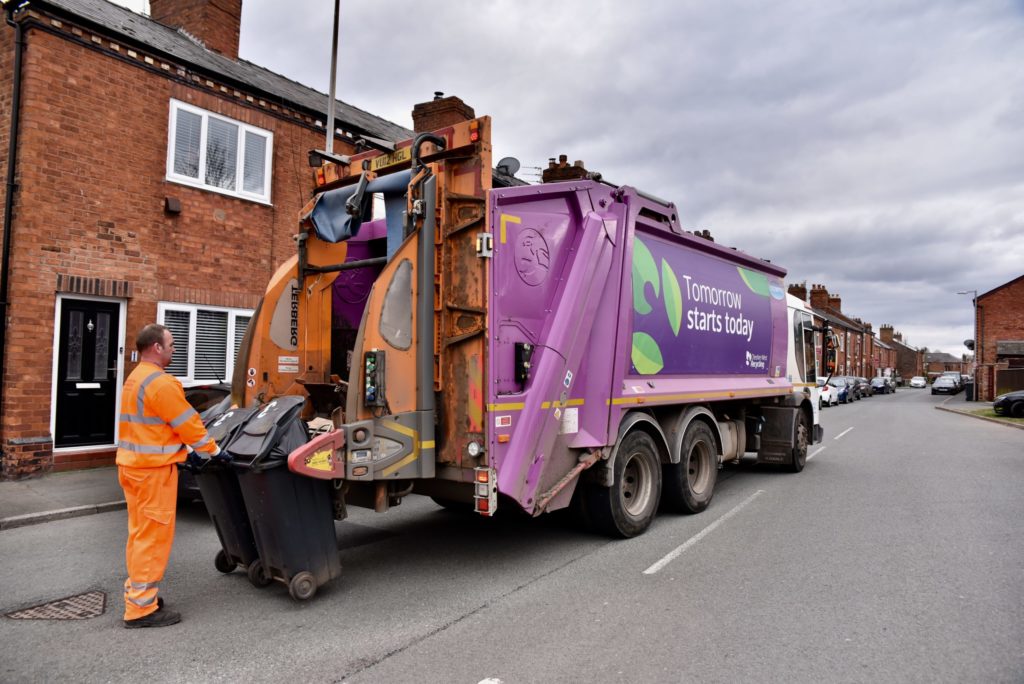
Many smaller stores simply do not have the room to store new and old equipment
Originally it was thought that to carry out this responsibility UK retailers would offer in-store take back services, but many retailers said it would not be logistically possible to offer take back in all of their stores. Constraints on space were cited as the predominant issue – many smaller stores simply do not have the room to store new and old equipment.
Following consultations with major stakeholders it was decided that instead of a take back scheme, or as an alternate option to such a scheme, retailers could fund collection facilities for WEEE. Producers, which are responsible for the collection and recycling of WEEE, could then collect the electrical goods from these facilities for recycling.
The government told retailers that they would have to provide an “adequate collection network,” of around 1,000 sites across the country. It was suggested that retailers could use the civic amenity sites, of which there are 1,074 in England, to provide this network.
Green light
Following several months of negotiations with the Department of Trade and Industry, the British Retail Consortium was given the green light to begin operating a retail compliance scheme last month. This would see retailers provide funding, based on their market share, to cover the cost of local authorities upgrading their CA sites.
Nigel Smith, British Retail Consortium's WEEE leader
The BRC has now sent out a letter to all local authorities asking them to detail the CA sites that they have available, the upgrades they think they will need for the collection of WEEE and the funding that will be needed to cover these changes. It has been proposed that authorities will be given £5,000 – £6,000 per site for the upgrades.
Nigel Smith, who is corporate social responsibility policy director at the BRC, says that so far the responses to these proposals from local authorities have been good.
He says: “We have had a lot of responses from local authorities and most of them have been positive. I expected a lot more negativity but we are very pleased with the early outcome.”
Criticism
The BRC has received some criticism from local authorities over its plans – notably the Local Authority Recycling Advisory Committee – because it announced that it would be providing just £8.2 million over three years, to authorities for the site upgrades.
LARAC said that although it was pleased that a retail compliance scheme was moving forward, it was “incredibly disappointed” with the fund offered. Neil Ferris of LARAC told letsrecycle.com: “Unless the producers are happy with a few skips on each site, with collection performed elsewhere, then many sites will not be able to upgrade for £5,000, but if the WEEE has to be separated out at the site and shrink wrapped, then we may be looking at anywhere as much as £250,000 for individual sites.”
Originally it was suggested by the DTI that retailers should provide about £5 million a year over a five year period.
But, Mr Smith explained that the £8.2 million figure had been reached following research carried out by consultants National Recycling. “It is not just a number we have plucked out of the air,” he says. “We could never get a figure to stand up using that, we needed something to back up what we were offering and this figure is what has been estimated.”
And, Mr Smith believes some local authorities may have over-estimated the kind of upgrades that will be expected at their sites. He says: “We don't actually have to segregate the WEEE on site, if retailers collected in store it would be sent in one bundle, not separated. Local authorities seem to think they need to be able to fit five different containers at a site, but that is not how it will work.
“Producers have said that the sites do not all have to be of the same standards. On smaller sites there is a possibility that it would contain simply a single crate, producers are not going to roll into these sites with five crates,” he adds.
Dr Philip Morton, chief executive at producer compliance scheme REPIC, recently announced that his organisation would be providing free containers for all of sites it has collection responsibilities with. It is expected that other producer compliance schemes will be doing the same. Many local authorities believed that the inclusion of containers at sites would have been paid for by the authorities themselves and included them when working out the value of site upgrades.
Meeting
The BRC is to visit the Department of Trade and Industry this week to discuss the local authority responses to the proposals. Mr Smith explains that the DTI will probably want to know why certain authorities have not volunteered their sites as designated collection facilities. It will then analyse the sites that have been nominated to determine the collection network assembled by the BRC.

Retailers are to provide an adequate collection network by January 2006
Mr Smith explains: “I imagine that the DTI will make some tweaks and suggestions and we will have to perfect the network we have. There is a possibility we will be told what we have isn't good enough and we have to look at in-store take back instead, but I believe we have come too far to back out of this now, we hope they will be flexible.”
Once the collection network is decided upon, expected to be in July, the DTI will designate which sites will receive collections from which producers and compliance schemes. Collections will have to begin by January 2006, but producer compliance schemes have said that they want to start collecting sooner rather than later.
The DTI needs to begin allocating designated collection facilities to compliance schemes and producers as quickly as possible if it is to have a collection network in place for the start of producer compliance at the beginning of 2006, Mr Smith says.
More time
Even if the BRC does not have its complete network of 1,000 sites prepared for this week's meeting with the DTI, based on early responses the BRC believes that it will be very close to reaching the target number. But Mr Smith believes that getting local authorities to sign up their CA sites would have been easier had the DTI given them longer.
Following the DTI announcing that the retail compliance scheme could move ahead with its plans, the BRC was given just 19 days to contact councils asking them to designate their CA sites as designated collection facilities. This meant that councils were given less than 19 days to analyse how much it would cost for them to upgrade their sites for the collection of WEEE.
Mr Smith says: “There was a lot of waiting and now there will be a mass of activity as the ball begins to roll. But when it came down to it we were only given 19 days notice to actually contact local authorities and get responses from them, which was not a perfect situation for us or the councils. We really needed more time.”
Tender process

As well as going to the DTI with a list of possible local authority collection sites, the BRC is also now in the process of tendering for a company to run the retail compliance scheme.
The tender document has been put out with companies given four weeks to respond. Mr Smith says that there has been interest expressed from most of the major producer compliance schemes. A decision is expected to be announced in July.
“The winning bidder will then need to begin recruiting members,” explains Mr Smith. “The bigger retailers that are already a part of the BRC will not be a problem, the issue will be with the small and medium businesses. We want to get in as many as possible, and there are masses out there.”
Small retailers
The BRC has already been liaising with other retail trade associations in an attempt to get in contact with as many small retailers as possible, with a view to signing them up. Mr Smith said that working with trade associations has been the best way to contact these smaller companies. Mr Smith hopes to have as many retailers signed up as possible by January 2006 when retailer responsibility starts.
Mr Smith says: “We want to make it as easy for them as possible, we will offer them a one off payment to cover their responsibility. The idea is to make it attractive to them, but they will have the option of in-store take back as well, they will have to weigh up what is best for them.”
Once collection sites have been upgraded to receive WEEE, the money collected by the retailers will be used to maintain the sites for the next three years. After this the scheme will be looked at again in 2008 to investigate what the retailers' responsibilities will then be.
With time running out before responsibilities for producers and retailers begin next year the pressure is on the BRC to make sure retailers are ready. And, Mr Smith is confident that the retail compliance scheme, and whichever company is chosen to run it, will have an adequate network in place well in advance of January 2006 when producers have to begin collecting from their allocated sites.













Subscribe for free